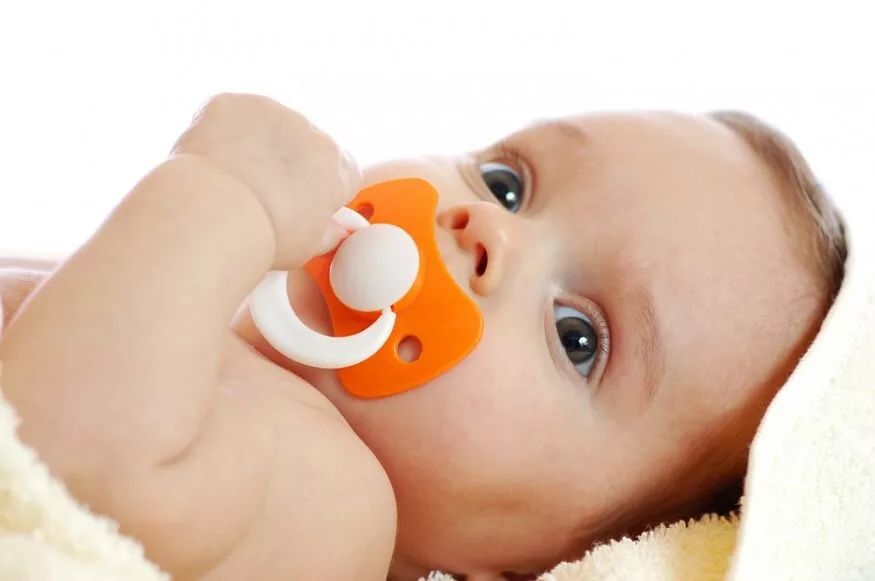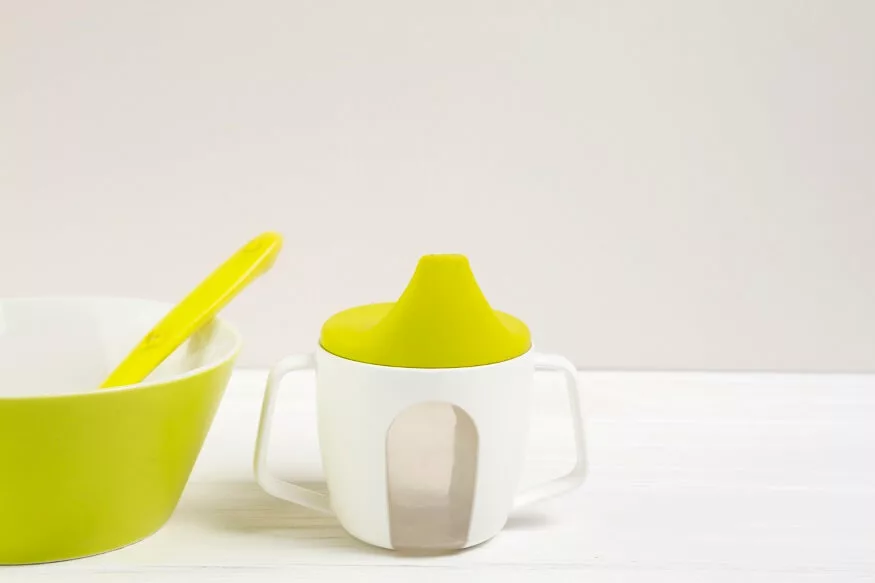The use of pacifiers has long been a source of comfort for babies and a sigh of relief for parents. However, as children grow, the prolonged use of pacifiers can bring about both advantages and drawbacks. This article aims to explore the pros and cons of pacifier use, shed light on the risks associated with its prolonged usage, discuss the optimal time to bid adieu to the dummy and offer practical tips on how to smoothly navigate the weaning process.
Pros of Using A Pacifier
Pacifiers have earned their place in the parenting toolkit for good reasons. One of the primary advantages is their soothing effect on babies. Sucking is an instinct for infants, providing them with a sense of comfort and security. Pacifiers, therefore, become a useful tool in helping babies self-soothe, especially during times of distress or when they need assistance falling asleep.
Furthermore, pacifiers can be a valuable aid in reducing the risk of sudden infant death syndrome (SIDS). The act of sucking on a dummy encourages babies to breathe through their noses, potentially decreasing the likelihood of respiratory issues during sleep.
Another notable benefit is the temporary distraction pacifiers provide during times when breastfeeding or bottle feeding is not an immediate option. This can be particularly handy in soothing a fussy baby in public spaces or during travel.
Also Read: Things to look out for best Baby Wipes for All Skin Types
Risks of Continued Pacifier Use
While the advantages of pacifier use are apparent, prolonged reliance on dummies is not without its drawbacks. Dental issues often arise as a consequence of extended pacifier use, with problems such as misaligned teeth or jaw development abnormalities being potential concerns. The constant sucking motion can impact the alignment of both baby teeth and emerging adult teeth, leading to orthodontic challenges in the future.
Moreover, excessive pacifier use can interfere with speech development. Babies learn to articulate sounds and words by exploring various mouth movements. Overdependence on pacifiers may limit these explorations, potentially delaying speech milestones.
There is also a risk of ear infections associated with prolonged dummy use. The constant suction can contribute to fluid accumulation in the middle ear, creating an environment conducive to infections.
Also Read: Is Baby Not Meeting Their Milestones? What To Do Next
The Best Time to Stop Using a Pacifier
Determining the optimal time to wean a child off a pacifier is a subjective decision, influenced by both the child’s developmental stage and the parent’s readiness. As a general guideline, most experts suggest initiating the weaning process between six months and one year of age.
Around six months, babies typically start teething, and the urge to suck may increase. This can be an opportune time to introduce alternative comfort measures, gradually reducing reliance on the pacifier. By the first birthday, most children have developed other self-soothing mechanisms, making it a suitable time to bid farewell to the dummy.
It’s essential to consider the child’s emotional readiness as well. Signs of readiness may include showing interest in other comfort objects, demonstrating increased independence, and displaying a reduced reliance on the pacifier during waking hours.
Also Read: Understanding Colic in Infants: Causes, Symptoms, And Remedies
How to Wean Off the Pacifier
Successfully weaning a child off a pacifier requires a thoughtful and gradual approach. Abruptly taking away the dummy can be a traumatic experience for the child, leading to increased resistance and distress. Here are practical steps to make the weaning process as smooth as possible:
1. Gradual Reduction
Begin by gradually reducing the time your child spends with the pacifier. Limit its use to specific situations, such as bedtime or naptime, and gradually decrease the duration. This step helps the child adapt to the idea of not having the pacifier constantly.
2. Introduce Comfort Alternatives
Replace the pacifier with alternative comfort items. Transitional objects such as a favourite stuffed animal, a soft blanket, or a cuddly toy can provide the emotional support that the pacifier once did. Encourage your child to form attachments to these new items.
3. Involve the Child in the Process
Offer positive reinforcement and praise for each step taken towards reducing pacifier use.
4. Create a Pacifier Ceremony
Turn the weaning process into a special event. Create a “goodbye pacifier” ceremony where the child can actively participate. This might involve decorating a box for the pacifier, placing it inside, and discussing how it will be sent to other babies who need it.
5. Be Consistent
Consistency is key during the weaning process. Ensure that all caregivers are on the same page regarding pacifier use and follow a consistent approach. This prevents confusion for the child and reinforces the message that the pacifier is gradually becoming less central to their routine.
6. Offer Comfort and Support
Expect some resistance and emotional reactions from your child during the weaning process. Be patient, offer comfort, and acknowledge their feelings. Positive reinforcement, such as praise and small rewards for successful pacifier-free periods, can also motivate the child.
7. Implement a Gradual Distancing Technique
Gradual distancing involves physically distancing the pacifier from the child, making it less accessible over time. Start by placing the pacifier slightly out of reach during naptime or bedtime. As days pass, move it a bit farther away until it eventually disappears from the sleep routine. This method helps the child adjust to the diminishing presence of the pacifier without abrupt changes.
8. Establish a Reward System
Create a positive reinforcement system to encourage your child’s cooperation during the weaning process. Develop a reward chart where your child can earn stickers or stars for each pacifier-free day. Once a certain number of stickers are accumulated, celebrate the achievement with a small, meaningful reward. This not only motivates the child but also turns the weaning journey into a fun and rewarding experience.
9. Gradual Shortening of the Pacifier
If your child is attached to a specific type of pacifier, consider gradually shortening it over time. Trim a small portion every few days until the child is left with a significantly smaller pacifier. This method allows the child to become accustomed to the changing size, making the final transition to no pacifier more seamless.
10. Seek Peer Encouragement
If your child witnesses others successfully coping without a pacifier, it may inspire them to embrace the change more willingly. Arrange playdates with pacifier-free friends to create a supportive environment for the weaning journey.
Also Read: Newborn Baby Crying: Reasons, Tips to Cope And Soothing Methods
EuroSchool believes every child is unique, and the key lies in finding an approach that suits both the child’s needs and the family’s dynamics.











